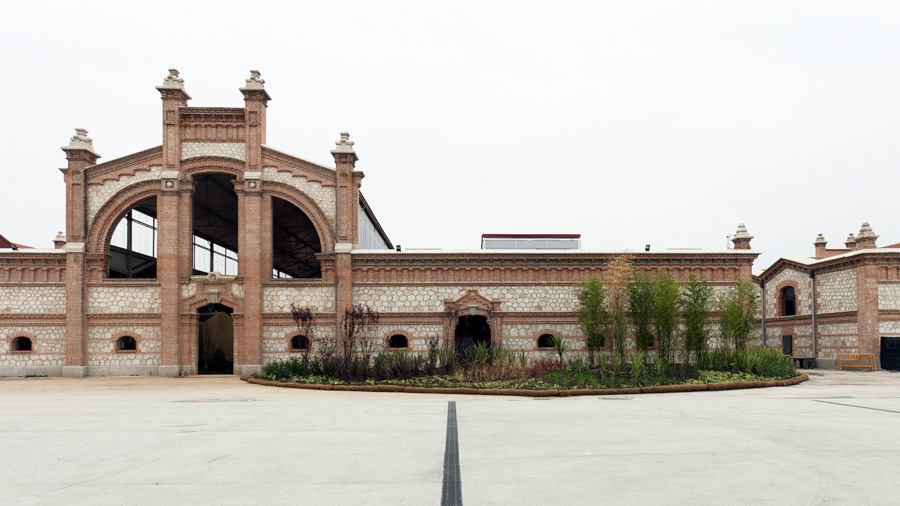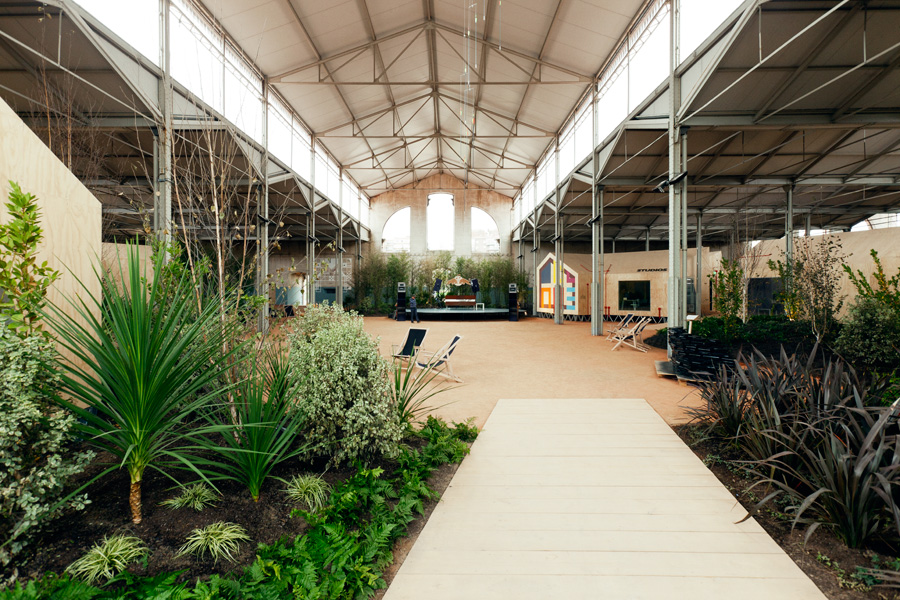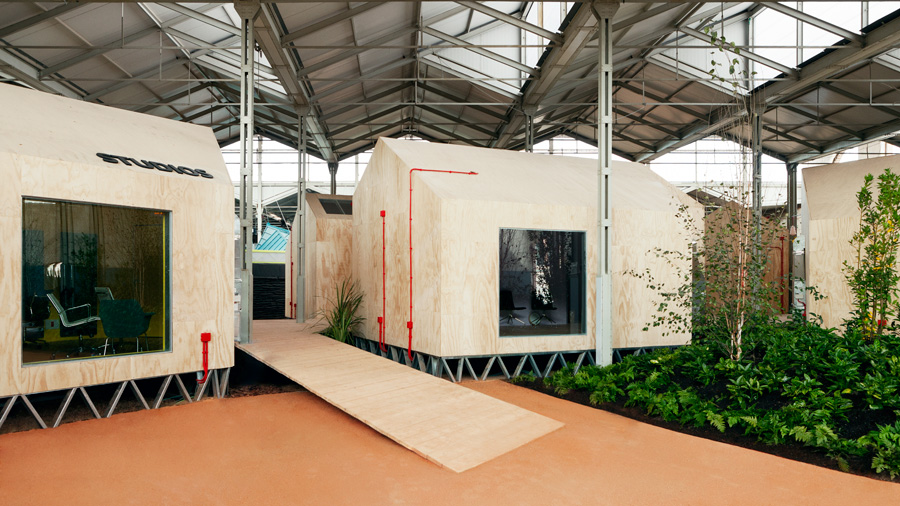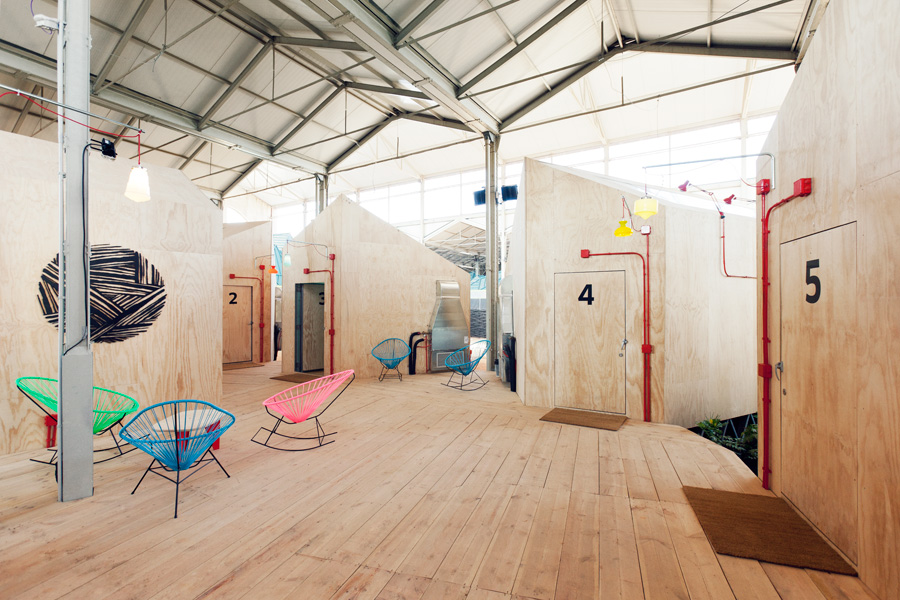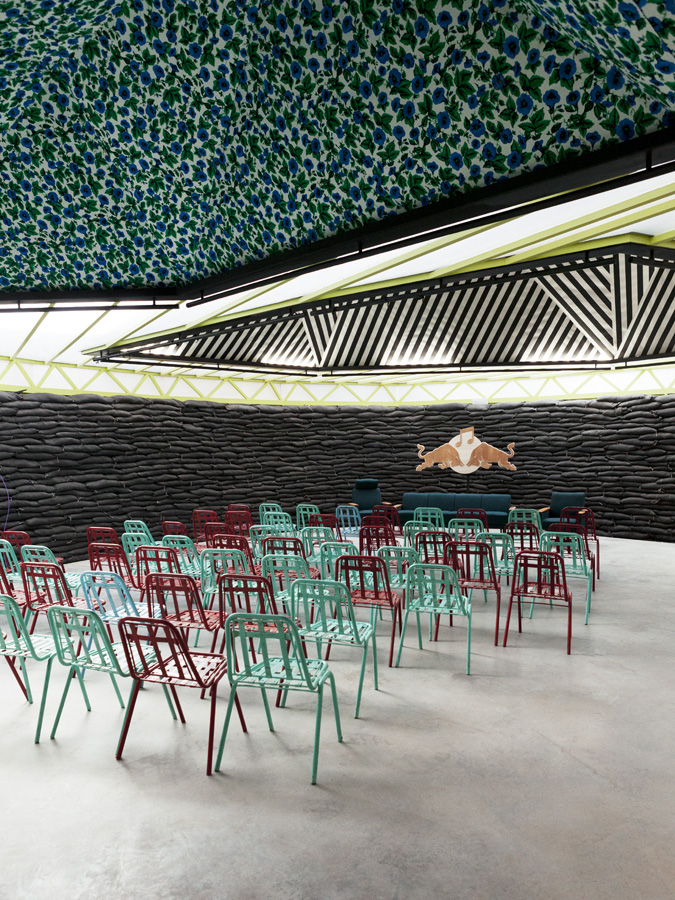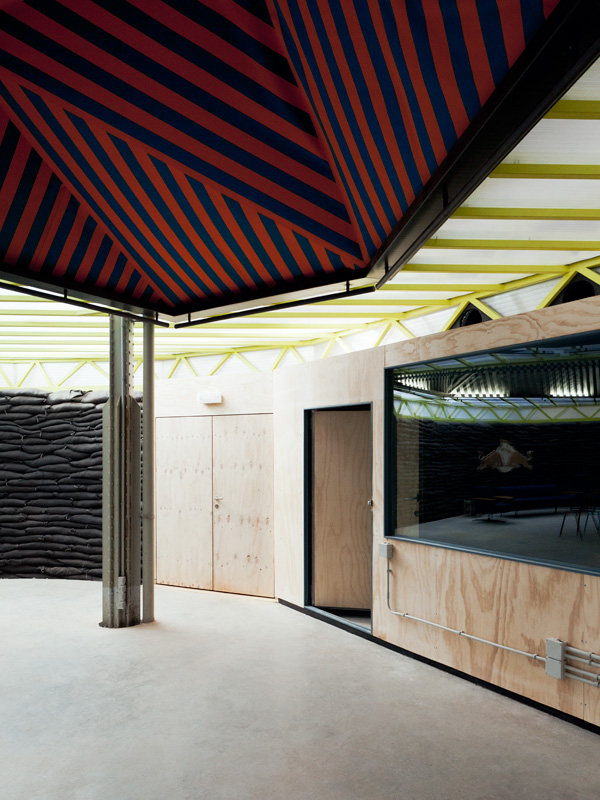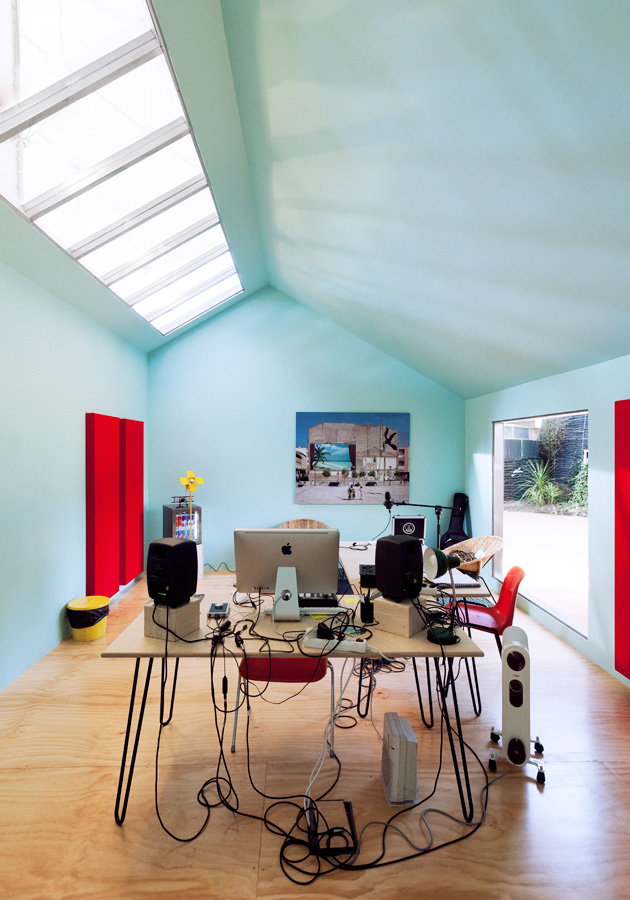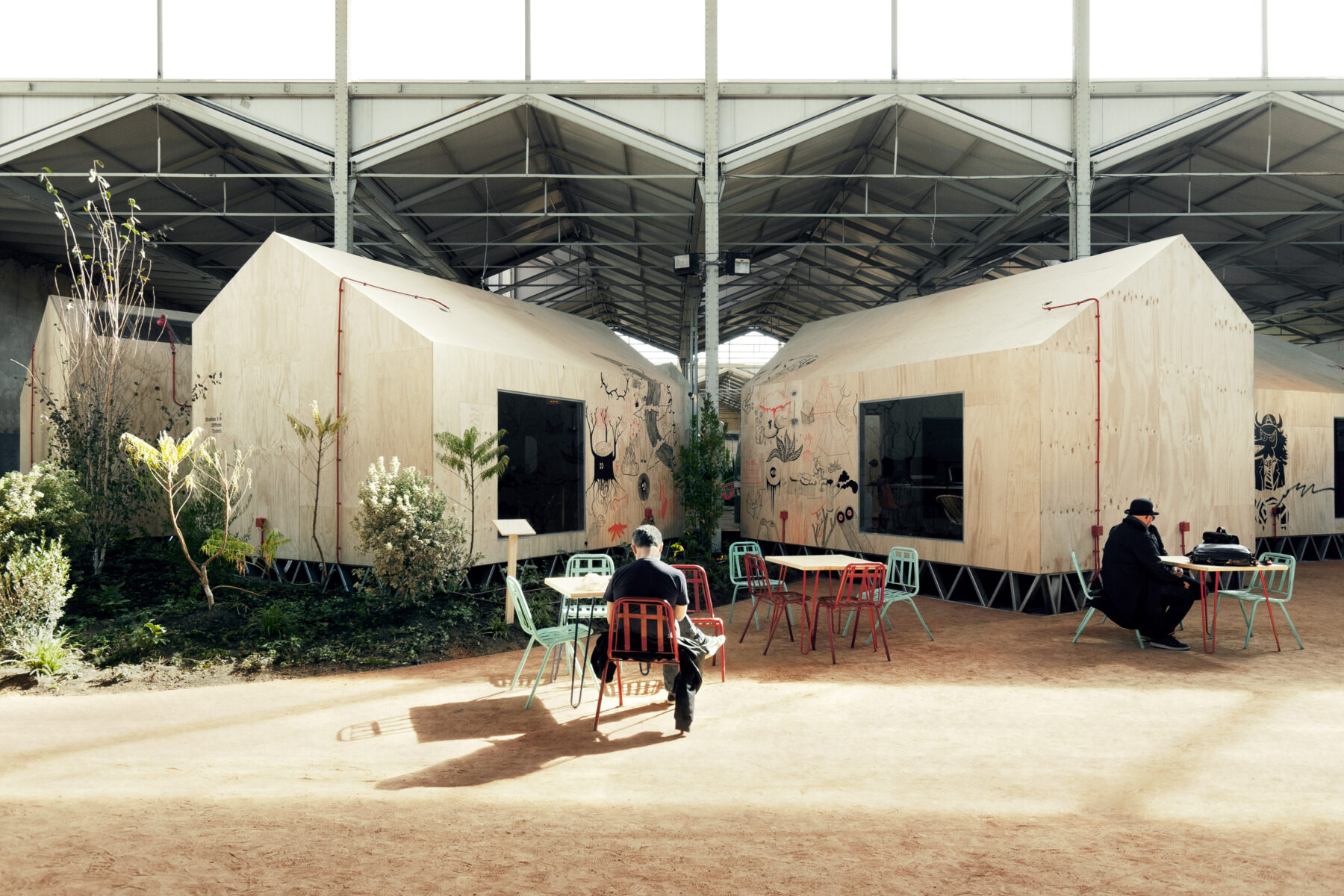The Red Bull Music Academy (RBMA) is a nomadic annual music festival, which headquarters in Madrid were created by Langarita-Navarro Arquitectos. An early 20th century industrial warehouse complex, was designated as the event’s new location. The proposal according to the architects was developed based on five guidelines: Deadlines and budget ,Regarding the pre-existing warehouse, Program requirements, Acoustics and Temporariness, while the spaces were placed as a “Russian matryoshka doll”.
This project has won a Special Mention Emergent Architect European Union Prize for Contemporary Architecture Mies van der Rohe Award 2013, Premi FAD 2012, AR+D Emerging Architects Award 2012, was also a Finalist XII Bienal Española de Arquitectura y Urbanismo 2013 and Selected Arquia-Próxima 2012.
-text by the architects
The creative space known as Matadero Madrid, which is located in an early 20th century industrial warehouse complex, was designated as the event’s new location. A medium-term project, The Nave de Música in Matadero Madrid The RBMA launched the programming for the new Nave de Música (music warehouse), a space specifically dedicated to audio creation and research.
Using the existing installation as a starting point and given its experimental character, the construction project was approached as a temporary structure based on the criteria of adaptability and reversibility that would make it easy to completely or partially reconfigure over time.
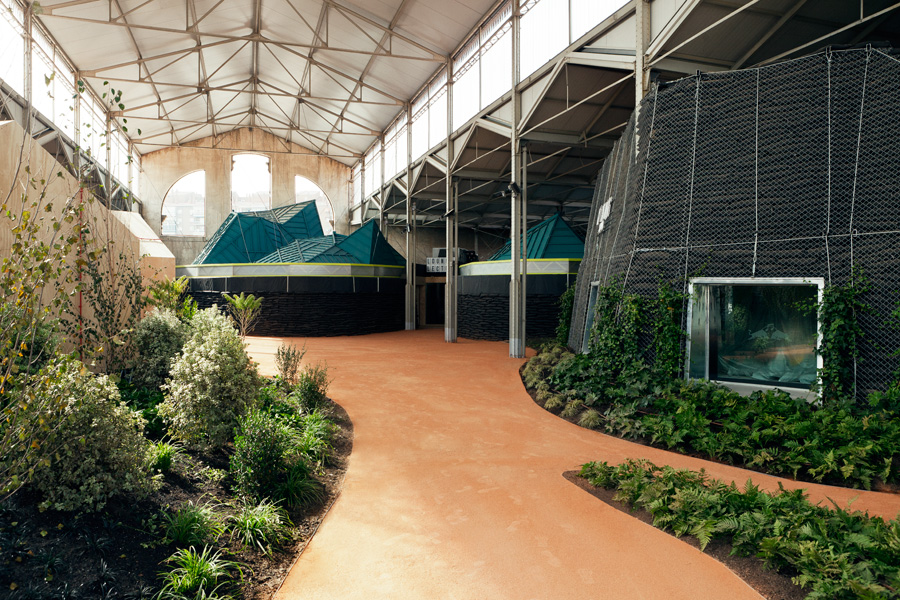
”In many ways this project shares the logic of a Russian matryoshka doll. Not only in the most literal, physical sense, in which one thing is directly incorporated into another, but also in a temporal sense, in which one actually originates within the other.”
The proposal was developed based on five guidelines:
1. Deadlines and budget. The design had to specifically comply with some very tight deadlines and budgetary concerns. The construction had to be completed in less than two months, implementing solutions that would require only light construction and seeking a balance between standardization and adaptability.
2. Regarding the warehouse. Warehouse 15 of the Matadero is an open space comprised of a metallic structure with a brick facade. This structure, which measures about 4,700 m2, opens directly to the outside. One of the criteria taken into account for this project was that of not modifying the warehouse itself, but rather leaving it exactly as it was before the intervention.
3. Program requirements. The program’s organization clearly establishes a specific configuration that is grouped into four areas: offices, studios for musicians, recording studios and an area used for conferences, radio and as a lounge. The chosen spatial and constructive systems would allow for the reconfiguration of these spaces for future events.
4. Acoustics. The event’s acoustic requirements determined its geometry, as well as the choice of materials and constructive solutions. Each of the areas acquired a specific logic that corresponded with its usage, thereby making it possible to uniquely resolve its acoustic needs. Some heterogeneous solutions included the massive walls in the recording studios, the absorbent surfaces of the cloth domes in the conference room and the structural and geometric independence of the nonparallel pavilions.
5. Temporariness. Given the temporary nature of this project and in order to avoid influencing future interventions in the warehouse, it was designed to be dismantled in such a way so as to not leave a trace. Even the “heaviest” actions were designed to be reversible and to allow for their easy recycling for future events. Examples of this included the use of sandbags to make up the walls of the recording studios and potted plants that could later be transplanted in other areas of the Matadero or the city.
As a result, the project unfolded in the warehouse’s interior in the form of a fragmented urban structure in which the variable relationship between proximity and independence, and preexistence and performance could offer unexpected stages to its community of inhabitants.
Credits & Details
Authors: Langarita-Navarro Arquitectos, Víctor Navarro, María Langarita.
Team: Juan Palencia, Gonzalo Gutierrez, Tonia Papanikolaou, Paula García-Masedo.
Surveyor: Javier Reñones.
Landscape: Jerónimo Hagerman.
Acoustics: Imar Sanmartí, Acousthink.
Mechanics: Úrculo Ingenieros.
Photos: Luis Díaz Díaz, Red Bull Music Academy (c), LNA, Miguel de Guzmán.
READ ALSO: Casa Martha in Mexico | by Naso Architecture office
